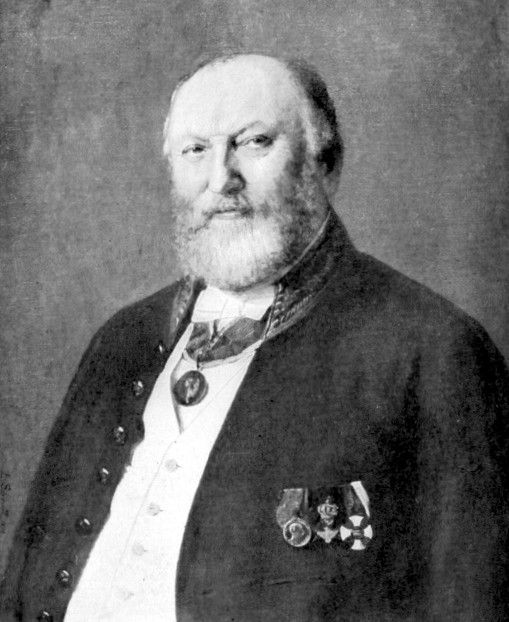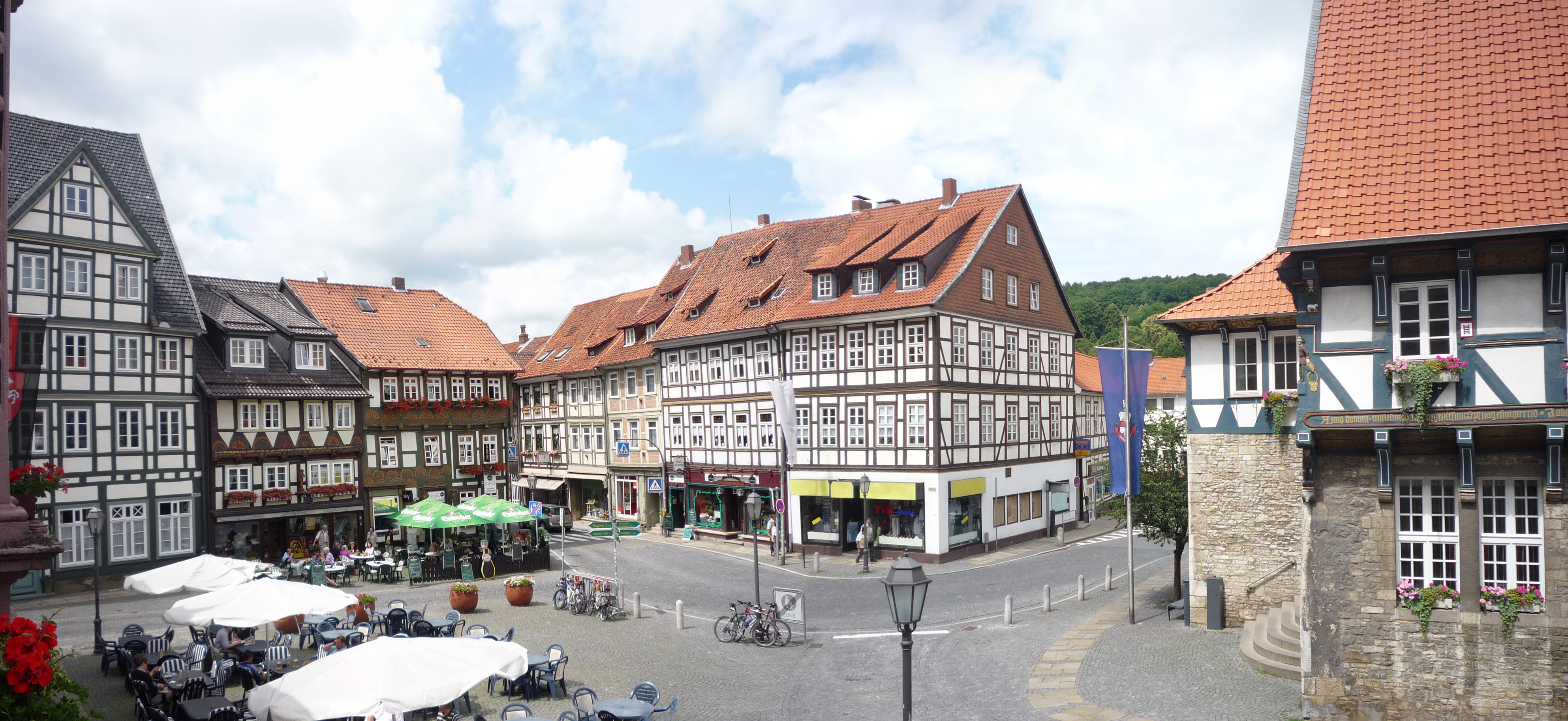|
Marie Elisabeth Zu Mecklenburg
Marie Elisabeth, Duchess of Mecklenburg (24 March 1646 - 27 April 1713) was a princess of Mecklenburg-Schwerin. In 1712, following the unplanned late pregnancy and ensuing resignation of the formidable incumbent, Henriette Christine of Braunschweig-Wolfenbüttel, Marie Elisabeth became Princess Abbess of Gandersheim Abbey, but she died the next year. Biography Marie Elisabeth was the fourth child from the second marriage of Adolf Frederick I, Duke of Mecklenburg. Her mother, Marie Katharina (1616–1665), was the elder daughter of Julius Ernst, Duke of Brunswick-Dannenberg (1571–1636). After her elder sister, Christina, became Abbess of Gandersheim in 1681, Marie Elisabeth received the consolation of a lesser appointment on 18 December 1682, as Canoness at the Imperial free and secular rotestant, so not under monastic vows, but nevertheless godlyfoundation of Gandersheim She was elected dean (''Dekanin'') on 24 November 1685, which meant she was deputy to the abbess. Howe ... [...More Info...] [...Related Items...] OR: [Wikipedia] [Google] [Baidu] |
Reichskammergericht
The ''Reichskammergericht'' (; ; la, Iudicium imperii) was one of the two highest judicial institutions in the Holy Roman Empire, the other one being the Aulic Council in Vienna. It was founded in 1495 by the Imperial Diet in Worms. All legal proceedings in the Holy Roman Empire could be brought to the Imperial Chamber Court, except if the ruler of the territory had a so-called ''privilegium de non appellando'', in which case the highest judicial institution was found by the ruler of that territory. Another exception was criminal law in which the Imperial Chamber Court could intervene only if basic procedural rules had been violated. The Imperial Chamber Court was infamous for the long time that it took to reach a verdict. Some proceedings, especially in lawsuits between different states of the Empire, took several hundred years. Some of the lawsuits had not been brought to an end when it was dissolved in 1806 following the downfall of the Holy Roman Empire. However, it has la ... [...More Info...] [...Related Items...] OR: [Wikipedia] [Google] [Baidu] |
1713 Deaths
Events January–March * January 17 – Tuscarora War: Colonel James Moore leads the Carolina militia out of Albemarle County, North Carolina, in a second offensive against the Tuscarora. Heavy snows force the troops to take refuge in Fort Reading, on the Pamlico River. * February 1 – Skirmish at Bender, Moldova: Charles XII of Sweden is defeated by the Ottoman Empire. * February 4 – Tuscarora War: The Carolina militia under Colonel James Moore leaves Fort Reading, to continue the campaign against the Tuscarora. * February 25 – Frederick William I of Prussia begins his reign. * March 1 – Tuscarora War: Colonel James Moore's Carolina militia lays siege to the Tuscaroran stronghold of Fort Neoheroka, located a few miles up Contentnea Creek from Fort Hancock. * March 20 – Tuscarora War: Colonel James Moore's Carolina militia launches a major offensive against Fort Neoheroka. * March 23 – Tuscarora War: Fort Neoheroka falls to the ... [...More Info...] [...Related Items...] OR: [Wikipedia] [Google] [Baidu] |
1646 Births
It is one of eight years (CE) to contain each Roman numeral once (1000(M)+500(D)+100(C)+(-10(X)+50(L))+5(V)+1(I) = 1646). Events January–March * January 5 – The English House of Commons approves a bill to provide for Ireland to be governed by a single Englishman. * January 9 – The Battle of Bovey Heath takes place in Devonshire, as Oliver Cromwell's New Model Army surprises and routs the Royalist camp of Lord Wentworth. * January 19 – Sir Richard Grenville, 1st Baronet, a Royalist fighting for Prince Charles against Oliver Cromwell's Commonwealth, is imprisoned for insubordination after proposing to make Cornwall self-governing in order to win Cornish support for the Royalists. After being incarcerated at the tidal island of St Michael's Mount off of the coast of Cornwall, he is allowed to escape in March to avoid capture by Cromwell's troops. * January 20 – Francesco Molin is elected as the 99th Doge of Venice after 23 ballots, and gove ... [...More Info...] [...Related Items...] OR: [Wikipedia] [Google] [Baidu] |
Frederick Francis III, Grand Duke Of Mecklenburg-Schwerin
Frederick Francis III (german: Friedrich Franz Paul Nikolaus Ernst Heinrich; 19 March 1851 – 10 April 1897) was the penultimate Grand Duke of Mecklenburg-Schwerin. Biography He was born in Schloss Ludwigslust as the son of Frederick Francis II, Grand Duke of Mecklenburg-Schwerin and his first wife Princess Augusta Reuss of Köstritz. He succeeded his father as Grand Duke on 15 April 1883. From an early age Frederick Francis suffered from asthma and severe breathing difficulties. He could not live in the north of Europe and lived instead on the shores of the Mediterranean, where the mild climate agreed with him. His homosexuality was an open secret. Frederick Francis' death in Cannes on 10 April 1897 is shrouded in mystery, as he was originally reported to have committed suicide by throwing himself off a parapet of a bridge. According to the official account of his death, however, he was in his garden when he experienced breathing difficulties and staggered around before falling ... [...More Info...] [...Related Items...] OR: [Wikipedia] [Google] [Baidu] |
Friedrich Wigger
Friedrich Wigger (17 June 1825 - 24 September 1886) was a north German archivist. During the second half of the nineteenth century he served as archivist in charge of the "Großherzogliche Geheime und Hauptarchiv Schwerin in Mecklenburg", the precursor to the Central State Archive of Mecklenburg-Vorpommern. Wigger was also a local historian and genealogist, noted in particular for his "Stammtafeln des Großherzoglichen Hauses von Meklenburg" (''"Genealogies of the Grand Ducal House of Mecklenburg"''). Life Peter Gottlieb Daniel Friedrich Wigger was born in Dassow, a small coastal town which served as the collection point for agricultural and other produce from the surrounding region prior to transfer, in necessarily flat bottomed barges, to the great port city of Lübeck. Joachim Friederich Heinerich Wigger, his father, is described (using a regional word) as a trader/shopkeeper (''"Kramer"''). Friedrich Wigger attended the ancient Cathedral School at the nearby penin ... [...More Info...] [...Related Items...] OR: [Wikipedia] [Google] [Baidu] |
Alexandrine
Alexandrine is a name used for several distinct types of verse line with related metrical structures, most of which are ultimately derived from the classical French alexandrine. The line's name derives from its use in the Medieval French '' Roman d'Alexandre'' of 1170, although it had already been used several decades earlier in ''Le Pèlerinage de Charlemagne''. The foundation of most alexandrines consists of two hemistichs (half-lines) of six syllables each, separated by a caesura (a metrical pause or word break, which may or may not be realized as a stronger syntactic break): o o o o o o , o o o o o o o=any syllable; , =caesura However, no tradition remains this simple. Each applies additional constraints (such as obligatory stress or nonstress on certain syllables) and options (such as a permitted or required additional syllable at the end of one or both hemistichs). Thus a line that is metrical in one tradition may be unmetrical in another. Where the alexandrine has ... [...More Info...] [...Related Items...] OR: [Wikipedia] [Google] [Baidu] |
Friedrich Schlie
Friedrich Schlie (12 December 1839, Brüel, Mecklenburg-Schwerin - 21 July 1902, Bad Kissingen) was a German art historian and archaeologist. Life As the son of a Kantor and teacher, Schlie was taught by private tuition until his graduation examination in Rostock in 1863. He then studied philology and art history at the University of Rostock and University of Munich, graduating in 1867. Next he worked for 2 years as an auxiliary secretary at the Prussian Archaeological Institute in Rome. From 1869 he worked as a teacher at the several secondary schools in Mecklenburg before in 1877 becoming director of the Schweriner Kunstmuseum. Friedrich Schlie received several honours, being made a Hofrat in 1882, Professor in 1891 and Geheimer Hofrat in 1899. He was a corresponding member of the Archaeological Institute in Rome and Berlin, as well as a permanent member of the committee of the international art historical congress. He also worked for the Society of Mecklenburgische History a ... [...More Info...] [...Related Items...] OR: [Wikipedia] [Google] [Baidu] |
Bad Gandersheim
Bad Gandersheim ( Eastphalian: ''Ganderssen'') is a town in southern Lower Saxony, Germany, located in the district of Northeim. , it had a population of 9,492. Bad Gandersheim has many half-timbered houses and is located on the German Timber-Frame Road (german: Deutsche Fachwerkstraße). The town contains an airport as well. Geography The town of Bad Gandersheim lies between the Leine Uplands, Weser Uplands, and Harz Foreland in the valley of the Gande River, into which its tributary, the Eterna, empties within the town's territory. To the north lies the Heber Ridge. The borough is predominantly hilly. The Harz Mountains begin about east of the town, and to the west is the Leine Graben (german: Leinegraben). Borough divisions The borough of Bad Gandersheim consists of the following subdivisions based on the surrounding villages: History The town dates back to 852, when Gandersheim Abbey, a house of secular canonesses, was created in nearby Brunshausen by Liudolf, ... [...More Info...] [...Related Items...] OR: [Wikipedia] [Google] [Baidu] |
Elisabeth Of Sachsen-Meiningen
Elisabeth of Sachsen-Meiningen (3 December 1681 - 24 December 1766) was a princess of Sachsen-Meiningen. Between 1713 and her death in 1766 she was long-serving Abbess at the free imperial secular uasi-monasticfoundation at Gandersheim (''" Kaiserlich freies weltliches Reichsstift Gandersheim"''). Life Elisabeth Ernestine Antonie von Sachsen-Meiningen was born in December 1681 at Meiningen, a daughter of Bernhard I von Saxe-Meiningen and his second wife, Elisabeth Eleonore von Braunschweig-Wolfenbüttel, whom Duke Bernhard had married earlier that same year. Elisabeth Eleonore von Braunschweig-Wolfenbüttel's father - thereby Elisabeth of Sachsen-Meiningen's maternal grandfather - was the dynastically ambitious art-loving and prolifically letter-writing Prince Anthony Ulrich von Braunschweig-Wolfenbüttel. She spent her childhood and teenage years at court, developing interests in literature and music at an early age. She was a gifted singer, and also made stage ap ... [...More Info...] [...Related Items...] OR: [Wikipedia] [Google] [Baidu] |

.jpg)



